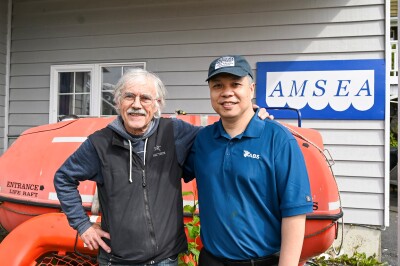Have you ever had an argument with someone that lasted so long and made you so frustrated that you ended up forgetting how it all started? Ever had an argument like that for years? Relationship counselors call it a “lack of effective communication.”
It's a problem in the commercial fishing world too, and it's easy to see why when you consider the varied stakeholders, including environmentalists, government officials, fishery managers, scientists and, yes, fishermen.
But unlike couples who can get divorced, you’re stuck with each other. And as David Frulla and Shaun Gehan point out in our May issue (p. 10), fishing’s lack of communication can lead to even bigger problems:
"Management has become a language unto itself, spoken by those who participate in it. The effect is to alienate fishermen, the public, and public officials not steeped in the system, and create barriers to effective participation. It also permits management decisions based on little to no credible scientific information to be masked in technical verbiage."
For some, the only way to be heard has been to go outside the system like the commercial fishermen who filed lawsuits to keep gillnetters in the main stem of the Columbia River or the participants in the United We Fish rallies who marched on Washington, D.C. in 2010 and 2012 (pictured).
National Fisherman is a voice outside the system too, telling the stories of individual fishermen in our nation's varied fisheries. But despite their differences, every fisherman must fish by the same laws, and those are a part of the story too, whether stated or implied.
In their column, "It really is that simple," Frulla and Gehan give us a good reminder of what these laws are by providing a simplified overview of fishery management’s evolution.
It’s the type of article that’s helpful to set aside for when you need to stop the buzz of confusion that can surround controversial topics because it’s a good reminder of the basics — this is the law and this is how it works.
The article is not available online, but is in our May issue, which arrives in mailboxes this week. I hope you'll check it out.
Photo by Linc Bedrosian







